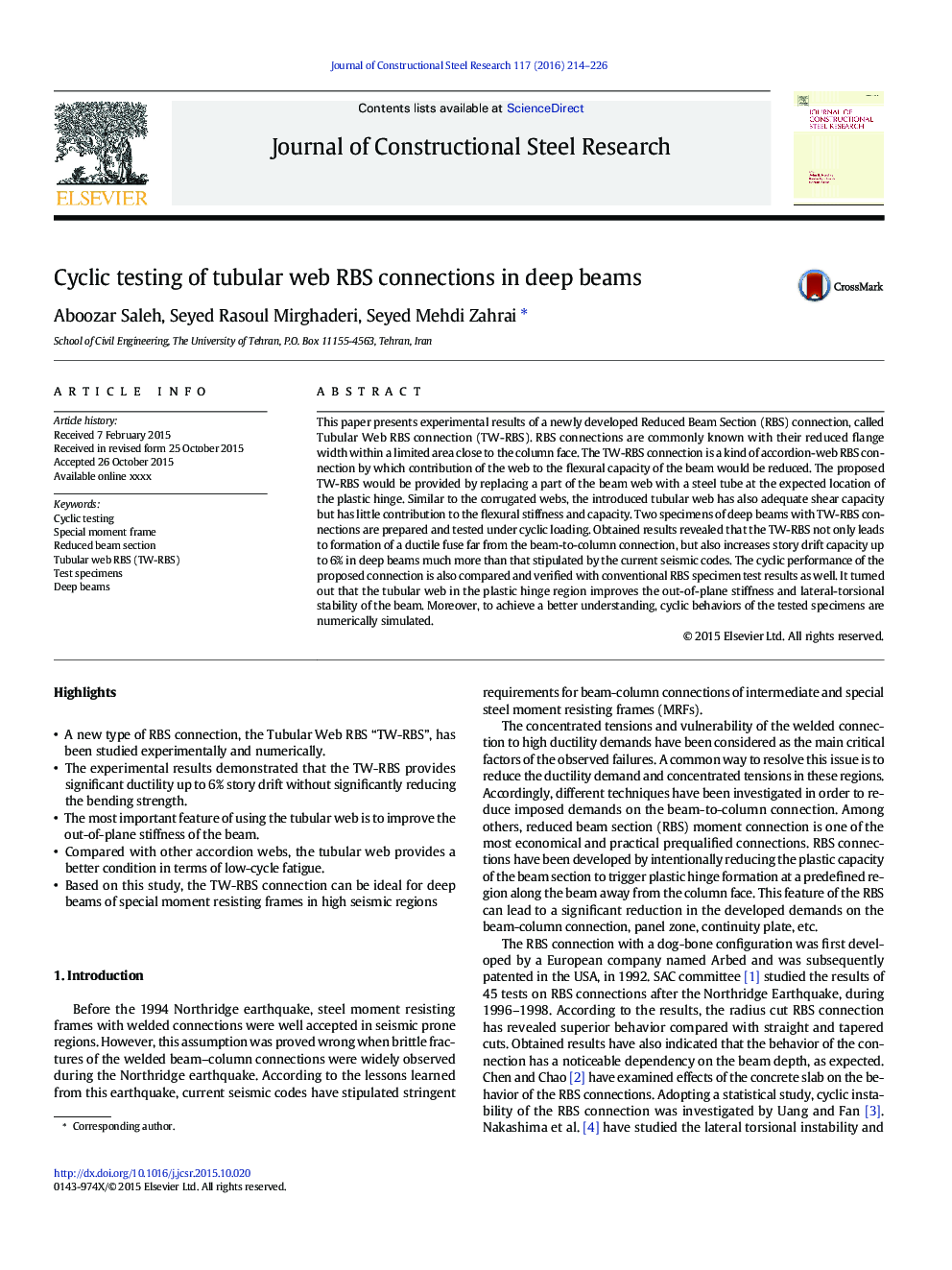| Article ID | Journal | Published Year | Pages | File Type |
|---|---|---|---|---|
| 6751674 | Journal of Constructional Steel Research | 2016 | 13 Pages |
Abstract
This paper presents experimental results of a newly developed Reduced Beam Section (RBS) connection, called Tubular Web RBS connection (TW-RBS). RBS connections are commonly known with their reduced flange width within a limited area close to the column face. The TW-RBS connection is a kind of accordion-web RBS connection by which contribution of the web to the flexural capacity of the beam would be reduced. The proposed TW-RBS would be provided by replacing a part of the beam web with a steel tube at the expected location of the plastic hinge. Similar to the corrugated webs, the introduced tubular web has also adequate shear capacity but has little contribution to the flexural stiffness and capacity. Two specimens of deep beams with TW-RBS connections are prepared and tested under cyclic loading. Obtained results revealed that the TW-RBS not only leads to formation of a ductile fuse far from the beam-to-column connection, but also increases story drift capacity up to 6% in deep beams much more than that stipulated by the current seismic codes. The cyclic performance of the proposed connection is also compared and verified with conventional RBS specimen test results as well. It turned out that the tubular web in the plastic hinge region improves the out-of-plane stiffness and lateral-torsional stability of the beam. Moreover, to achieve a better understanding, cyclic behaviors of the tested specimens are numerically simulated.
Related Topics
Physical Sciences and Engineering
Engineering
Civil and Structural Engineering
Authors
Aboozar Saleh, Seyed Rasoul Mirghaderi, Seyed Mehdi Zahrai,
